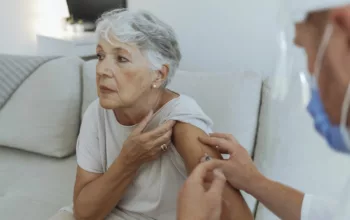The decade of vaccines: progress through strengthening dialogue and partnership
Author
Share
Last week, in Geneva, the global immunization community gathered at the World Health Organisation’s Headquarters to review progress on the Global Vaccine Action Plan (GVAP).
During the presentations, part of the Strategic Advisory Group of Experts of Immunisation (SAGE) meeting, it become clear how vital partnership and collaboration will be if we are to meet immunization goals.
For example, although there have been some improvements, most GVAP indicators are still off-track and it shouldn’t be taken for granted that targets will be met by 2020. In fact, after 2020, the challenge will be to ensure gains made are protected and then further extended. As the SAGE GVAP 2017 assessment report warns, the present risks threaten to slow the extension of vaccines to under-served populations.
One recommended way to spread the benefits of immunization is to reinforce cooperation between vaccination programs and emerging health and development agendas and to strengthen dialogue with other sectors, such as the business and financial industry. Broadening this conversation can help re-energize immunization and address the risk posed by falling behind.
For five decades, the International Federation of Pharmaceutical Manufacturers and Associations (IFPMA) has been at the frontline of industry’s dialogue and collaboration in global health by representing the research-based biopharmaceutical industry. We have a long record of working with global immunization partners to contribute scientific, regulatory, and quality advice.
As set out in my presentation during the meeting, the research-led manufacturers play a key role in realizing the goals set in the Global Vaccine Action Plan by moving the compass needle through new and improved vaccines, reliable supply of safe and high-quality vaccines, and collaboration.
Today there are more than 40 active vaccine partnerships worldwide involving seven IFPMA members. Each has encouraging progress to report, such as the vaccine partnerships that help tackle hepatitis, influenza, measles, polio, rubella, malaria, Ebola, dengue and HIV.
Innovation in protecting against non-vaccine preventable diseases has significantly progress during the Decade of Vaccines. As reported in the SAGE 2016 GVAP assessment, the first malaria vaccine to be assessed by a regulatory agency received a positive opinion from EMA. A vaccine against dengue has been licensed in multiple countries and at least two other candidate dengue vaccines are in Phase III trials. Candidate vaccines against other priority diseases, including a universal influenza vaccine and vaccines for maternal immunization such has respiratory syncytial virus (RSV), group B strep, tetanus toxoid and pertussis are moving through preclinical and clinical development. The first Ebola vaccines are on their way for late-stage development and potential licensure. Manufacturers have also confirmed their commitment to invest in controlled-temperature chain (CTC) labelled vaccines and packaging and presentation optimization to facilitate local logistics and transportation.
Beyond vaccines, industry is supporting innovation in public health services such as through establishing comprehensive prevention program that include both vaccination and screening test, harnessing mobile technology to help vaccinate more children, and developing a diagnostic and implementation framework that may be applied to any vaccination program that has sub-optimal coverage.
And through the GAVI Alliance and the CEPI initiative, industry is playing a crucial role to ensure the benefits of vaccination are extended and the research, manufacturing and safety standards are ready to respond to epidemics.
For those vaccine innovations to reach millions more, we need to find solutions to secure and stabilize the supply chain by drawing on our understanding of the complex journey of a vaccine.
The SAGE GVAP 2017 assessment report confirm the alarming rise in stockouts of vaccines – the majority of them, especially outside of high-income countries, being a result of internal (in-country) issues rather than vaccine production, such as inaccurate forecasts, stock management issues and procurement delays. It becomes urgent to build country’s capacity in effective stock management and improving procurement practices.
The combination of increased regulatory complexity, the decrease in the number of global vaccine manufacturers, the globalization of the supply chain, and fast evolving demand have also resulted in constrained vaccine supply.
Dr Cravioto, the chair of SAGE, led an agenda that was rich in thoughtful contributions on these issues. The discussions acknowledged the successes to date and the growing alignment between global immunization goals and global health and development agendas, while singling out what remains to be done, such as reducing the current complexity of regulatory processes and reconciling the long lead times to manufacture a vaccine with procurement practices.
Timely dialogue and collaboration will be key to solving these issues, as will increased joint vaccine and immunization advocacy, to ensure that every person, of all ages, who can be protected through immunization is, indeed, protected by vaccines and better health outcomes are delivered around the world.
Author






